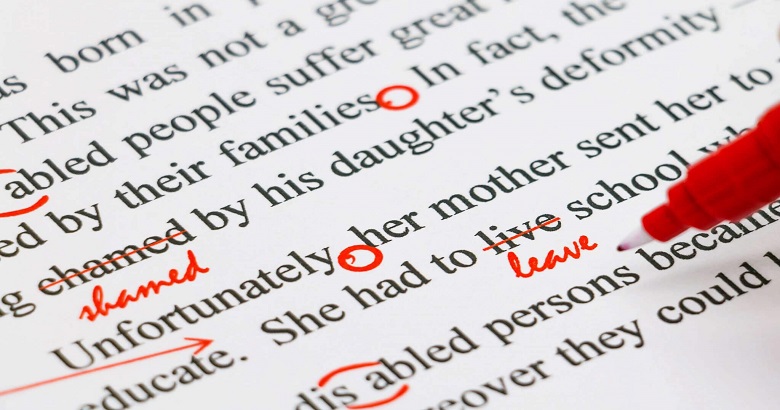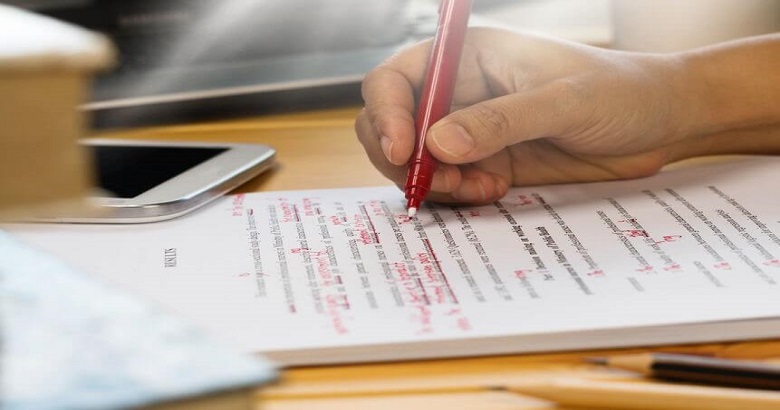The process of delivering a developmental edit for a manuscript is complex and time-consuming. On the surface, it appears that presenting an edit should take about the same amount of time as reading a novel, but this is not the case.
Reading is a different experience than editing.
Reading is an inactive and passive activity in which the reader aims to become immersed in the world created by the writer. For an editor, the process is nearly the opposite. Editing a book is an active process in which the editor seeks to engage with every aspect of the manuscript as it unfolds. An editor cannot afford to get lost in a world; they must constantly scrutinize the words on the page from a critical perspective. The editor continually reviews what is written, searching for ways to improve and adapt the prose to produce a better reading experience.
This means that developmental editing is a stop-start process that requires time.
An editor constantly pauses to jot down notes, correct sentences, and scrutinize the chosen words. Frequently, they must reread sections or chapters to ensure coherence. It’s common for an editor to revisit earlier chapters, providing continuity and refinement throughout the manuscript. When you combine fact-checking and line editing, you can see how the editing process may quickly become complex and time-consuming.
Each novel is unique, with its level of complexity and depth of challenges. Though many novels deal with similar concerns, how those challenges are addressed and resolved varies depending on the writer and the book. Because each story has its problems, the developmental editing process can be prolonged even more as the editor attempts to figure out which issues are the most serious and how to resolve them with the least effort.
If you opt to do line editing along with developmental editing, it slows down the editorial process while the editor corrects sentence-level errors. Many consistent issues can be resolved with thorough find and replace, but this is just a fraction of the changes that must be done; it is not unusual for a manuscript to have hundreds, if not thousands, of small line-level changes once an edit is complete.
Finally, an editor will create an editor’s report that includes any comments and changes made to the text. This report is typically multiple pages long, indicating that it is complex and time-consuming. An editor should identify potential problems with a manuscript and offer the writer at least one viable solution to these concerns.
It is also possible that a novel contains a more complex subject that needs a thorough and thoughtful analysis. If this is the case, the report may take several pages to resolve the issue and at least one extra session with the writer before the novel moves on to the next stage.
This raises the question of how long a novel will take to edit.
There is no clear answer to this issue, but over the years, we’ve learned that an experienced editor working with a well-written novel may anticipate editing 5 to 10,000 words daily.
This means a 60,000-word novel will take one to two weeks to complete.
There is one more factor to consider. Experienced editors are constantly working. If you come across a professional editor who is not busy, it should raise alarm bells. As a result, while editing a book may take two weeks, you may have to wait many weeks for your manuscript to move up the queue. It’s worth the wait because professional editing cannot be rushed.
Editing a Book Tips – The Best of the Best!

Finally, It’s the time to edit your novel. Are you excited or maybe a bit apprehensive? Are you not sure where to start, or are you wondering if it’s even necessary since you had spell-check on while writing?
Editing a 150,000+ word manuscript might seem overwhelming and even redundant, but it’s an essential part of the writing journey. Without editing, your novel is only half-baked, and you certainly don’t want to serve it before it’s ready. To help you through this crucial phase, here are editing book tips to enhance your editing process and craft a stronger story.
-
Lower Expectations for the First Draft
When you sit down to edit, your work will likely be ultimately trash. There is no first draft that is worthy of the Pulitzer Prize. The goal of the first draft is to get your ideas onto paper and out of your head. Do not cringe while reading your first draft. Remember that the goal is to provide the tools you’ll need to shape your story.
-
Take a Long Break
You’ve just finished writing your novel and are going back to page one to start your first round of edits. Nope. Not yet. You are too close to the content. You’re still thinking with the same mindset tale when you first wrote it. Set aside at least two weeks before revising your novel to maintain neutrality. When you return, you will have a fresh viewpoint.
-
Print Your Manuscript
The majority of us use computers to compose. However, you might find it quicker to print off your copy and manually mark it up with a red marker when editing. While you may simply edit on your computer, manually editing can spark a new way of thinking. You’ll eventually return to your computer to complete the modifications, but there’s a noticeable difference between sitting at a computer desk and sitting in a comfortable chair.
With the former, you will feel rushed, which might lead to frustration during the writing process. However, with the latter, you are more likely to take your time and appreciate the re-reading experience.
-
Reread it as a Whole
You may be tempted to enter correction mode as soon as you begin editing. However, reading through your story once without changing it is best. Simply create notes. Use a notebook to jot down any thoughts you have while reading. This will give you a comprehensive view of your story, including recurring themes, motifs, pacing, planning, and more.
It’s critical to consider and read your story as a whole. You won’t notice the big picture if you look at the minute details, so you need to view both.
-
Read Your Novel Aloud
Don’t read your text silently while revising it. Read it aloud to yourself. This is another method for assessing pacing, but it can also assist in uncovering foul language, repetitive words, and filler information. These are words and phrases that your brain recognizes so well that it automatically self-corrects before you even notice it. This is why faults are often overlooked when reading silently. However, when you read aloud to yourself, you will see things you would ordinarily ignore.
-
Concentrate on Your Word Choice
Every word in your novel matters. Even if you’re dealing with 150,000 to 200,000 words, you don’t have the freedom to ramble or repeat yourself. Why? How you tell the story, particularly the words you choose, becomes integral to the experience.
When deciding between two terms, always choose the simpler of the two. The average 21st-century reader lacks the lexicon of yore. In fact, some people don’t even understand what “of yore” means. And that’s fine. When it comes to storytelling, the goal should always be clarity rather than poetry. Your readers will appreciate you.
-
Don’t Copyedit
The initial round of modifications is mainly developmental. Concentrate on the structure. Examine the characters who propel the plot forward, the scenes, the pacing, the themes, and the larger picture. Don’t get bogged down in choosing word choices—at least not initially. That will follow after the second round of changes once you’re satisfied with the plot. What’s the use of correcting punctuation or grammar if you end up eliminating the entire chapter in the final edit?
Here’s the mantra: develop first, proofread later.
-
Restructure Your Chapters
Start and end chapters with intrigue. Begin the chapter by grabbing the reader’s attention. At the end of the chapter, shove the reader off the cliff. But do not let them fall. Grab them again. And the cycle continues. Readers enjoy riding a roller coaster into the unknown.
Examine your chapter structure to ensure that your plot delivers the essential energy. Are you starting from the correct place? Are you ending at the proper time? Can you remove portions from your chapter to improve pacing?
Do the following things to keep your readers hooked:
- Get rid of throat-clearing at the beginning of your chapters. There is no need to recap something the reader can easily reread.
- Enter the scene at the very last time. You do not need to cover every line of dialogue between the characters. Only concentrate on what will propel the plot forward.
End each chapter with a sense of doubt that makes your reader think, “I’ll just read one more page.”
FAQ’s – Frequently Asked Questions
1. How much time does it take to edit a book?
The process of editing a book varies widely based on its length and complexity, although it often takes a few weeks to several months. Allow adequate time for thorough and high-quality editing.
2. What factors influence the time needed to edit a book?
The length of the book, the genre, the condition of the original manuscript, and the type of editing required can all have an impact on the editing duration. Each factor plays an important role in creating the overall timeline.
3. How can I speed up the book editing process?
To speed up the process, learn from editing a book tips, including developing a clear timeline, splitting the content into manageable chunks, and using professional editing tools. Furthermore, keeping organized and focused can significantly save editing time.
4. Should I employ a professional to edit my book?
Hiring a qualified editor can dramatically improve the quality of your book. Seeking referrals and analyzing qualifications will help you find the best one. A professional editor’s advice can be quite helpful in fine-tuning your composition.
5. Can I edit my book myself, and how long will it take?
Self-editing is possible, although it usually takes longer because of the learning curve and potential bias. Incorporating editing a book tips from skilled editors will help you streamline your self-editing process and improve productivity. Remember that a fresh perspective is usually required to identify previously overlooked flaws.



